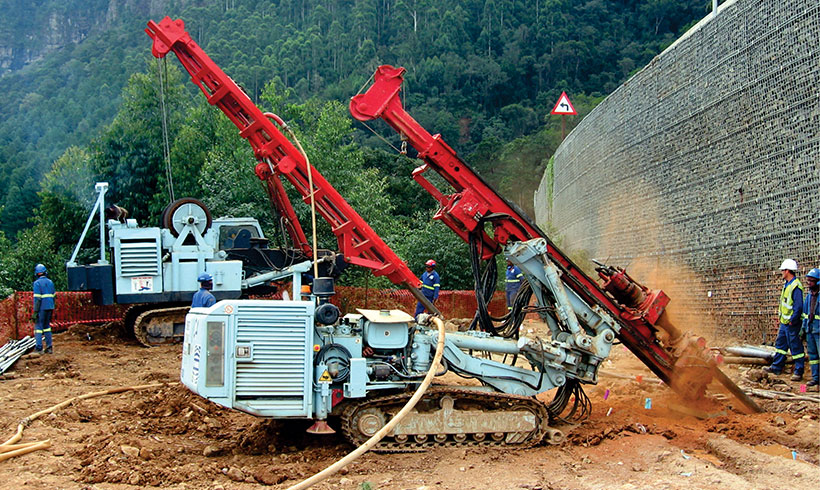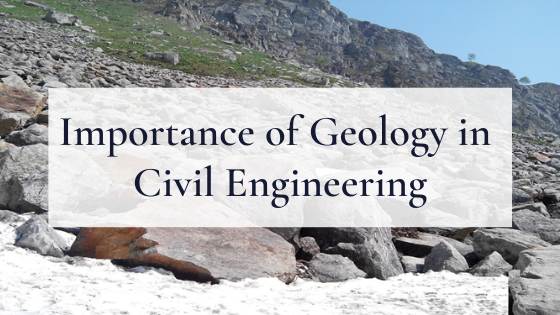The 9-Second Trick For Geotechnical Engineering For Construction Projects
The 9-Second Trick For Geotechnical Engineering For Construction Projects
Blog Article
The 20-Second Trick For Geotechnical Engineering For Construction Projects
Table of ContentsGeotechnical Engineering For Construction Projects Fundamentals ExplainedSome Known Facts About Geotechnical Engineering For Construction Projects.The smart Trick of Geotechnical Engineering For Construction Projects That Nobody is Talking AboutThe Facts About Geotechnical Engineering For Construction Projects RevealedGeotechnical Engineering For Construction Projects - QuestionsAll about Geotechnical Engineering For Construction ProjectsGeotechnical Engineering For Construction Projects Fundamentals ExplainedSome Known Questions About Geotechnical Engineering For Construction Projects.
Synchronizing with this boosted complexity comes geological and ecological aspects that impact the layout of the foundation, which is arguably one of the most crucial part of any kind of growth. Individuals require to rely on that buildings, bridges, and roadways will certainly stand the test of time. A Geotechnical designer recommends on how a framework can best be sustained providing its special situations What's concealed listed below the surface of the ground is likely the most important item of details that a Geotechnical Designer desires.These examples are then analyzed by the laboratory to establish soil make-up (Geotechnical Engineering for Construction Projects). The break down of sand, silt, clay, and various other materials present in the dirt, assists the designer identify what distinct features the website has and what the ramifications of those might be. Naturally dirt composition is just one examination that can be performed on examples
Little Known Facts About Geotechnical Engineering For Construction Projects.
Based on these tests, there may be extra soil borings that are drilled, or the engineer might have adequate info from the preliminary examinations to make a referral to the client on how ideal to wage their task. Outcomes are generally reported with borings logs which show the soil structure and attributes at a range of midsts.
Geotechnical designers are accountable for understanding the properties of natural deposits and using this knowledge to establish secure, affordable designs for building and construction jobs. It is a crucial part of any kind of civil engineering project, as it is utilized to identify the suitability of a website for building and construction and to guarantee the structure's safety.
This consists of doing lab tests on the samples and using geophysical approaches such as seismic refraction and electric resistivity surveys. This information is made use of to examine the website's viability for building and construction and to establish the kind of foundation that need to be utilized. Geotechnical design analyzes dirt conditions, determines prospective risks, chooses an appropriate foundation system for the proposed framework, and figures out the very best structure style for a given task.
Little Known Facts About Geotechnical Engineering For Construction Projects.
The structure may end up being unpredictable or collapse without proper soil stabilisation, causing pricey fixings and prospective injury. The stabilization process entails making use of different techniques to boost the security of the dirt, such as compaction, grouting, and the enhancement of enhancing materials. Without soil stabilization, the risks linked with building and construction jobs would be much higher, and the outcomes a lot less reputable.
Geotechnical engineers conduct website investigations to analyze the dirt's properties and determine prospective threats. They create and apply dirt stablizing strategies, such as adding concrete, lime, or other supporting agents, to enhance the dirt's toughness and security.
Not known Factual Statements About Geotechnical Engineering For Construction Projects
Geotechnical engineers are essential in helping to guarantee that dirt stablizing is done appropriately to ensure that the framework is risk-free and safe and secure. Geotechnical design is also made use of to evaluate dirt problems and determine possible threats. This consists of assessing potential flooding, landslides, and other natural calamities that might affect the structure.
Geotechnical designers utilize this understanding to execute website investigations, dirt, and rock screening, and to interpret the outcomes to figure out the ideal layout specifications for a job. This information is made use of to ensure that the foundation, keeping wall surfaces, slopes, and other frameworks developed on or within the subsurface products have adequate security and resistance to external tons, such as earthquakes, wind, and water.
These frameworks need a deep understanding of the behavior of the subsurface materials, along with the capacity to manage the influence Discover More of excavation and construction on the surrounding setting. Geotechnical engineers utilize their experience to figure out the appropriate layout criteria for these structures, such as the shapes and size of the tunnel, the toughness of the sustaining rock, and the type and quantity of assistance required.
Along with the style and building and construction of structures, geotechnical engineering also plays an essential duty in the recovery and maintenance of existing structures. As frameworks age, they may experience destruction or other troubles that affect their stability and efficiency. Geotechnical engineers utilize their know-how to examine the condition of these structures, identify the sources of the problems, and establish approaches to address them.
Getting My Geotechnical Engineering For Construction Projects To Work
In this short article, I will certainly review the role of geotechnical engineering and the kinds of troubles geotechnical designers solve. Geotechnical engineers (geotechs) are associated with virtually every kind of civil design task. After all, every framework is sustained by dirt or rock unless it is drifting, flying, or falling down.
Geotechs are generally most involved at the start of a project. Geotechnical Engineering for Construction Projects. A few of the jobs that a geotech might be accountable for are exploring subsurface conditions, establishing needed laboratory screening of dirt and rock, interpreting the subsurface expedition outcomes, and composing reports that document the site problems and offer referrals for foundations, fill requirements, incline stability, and so on
It is not uncommon for geotechnical engineers to specialize in just one of the areas noted above and research that subject their entire job. Geotechnical engineering is an important element of any civil design task. No matter exactly how wonderful a framework is constructed, it will certainly Learn More not be great for long if the structure is insufficient.
The 5-Minute Rule for Geotechnical Engineering For Construction Projects

Oftentimes, things that might not appear vital turn out to be vital years later on when concerns develop. One last thing to bear in mind: geotechnical design is wed to geology. No issue just how great your engineering competence is, if something crucial is missed out on in the geologic characterization at a site, your knowledge might not save you.
Jese lives in West Virginia with his other half and son. He takes pleasure in creeping around on any kind of landslide he can discover and hanging around fly fishing on the water. He can be found on LinkedIn. I wish you appreciated this week's article by visitor writer Jese Vance. If you have an interest in your firm potentially joining the Civil Engineering Collective, please call us here or call us at 800-920-4007. I wish you'll join us.
Geotechnical Engineering For Construction Projects Fundamentals Explained

It is crucial to recognize the dirt problem prior to making the kind and deepness of continue reading this structure needed for the structure. In order to recognize the subsurface soil problem, a geotechnical examination is called for.
The Ultimate Guide To Geotechnical Engineering For Construction Projects
As soon as the examination results come, the Geotechnical Engineer analyses the record, which describes the dirt and rock residential or commercial properties groundwater problem and the linked dangers. The type of structure called for to develop the framework is then identified. Based upon the suggestion of the Geotechnical Engineer, the architectural designer then designs the structure.
Report this page